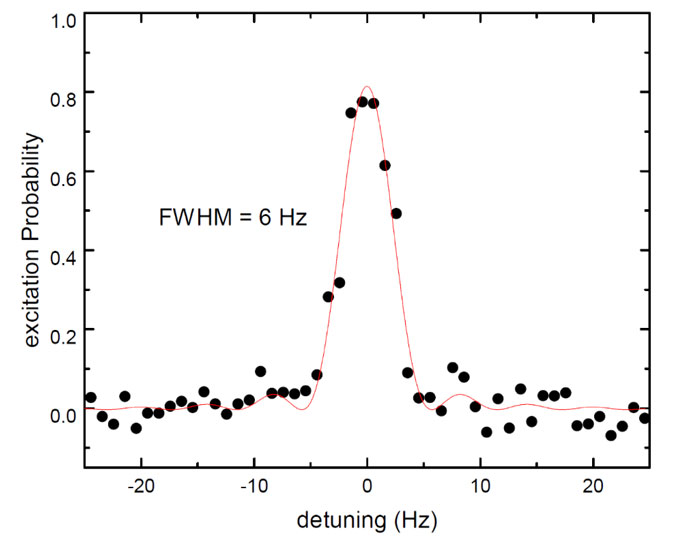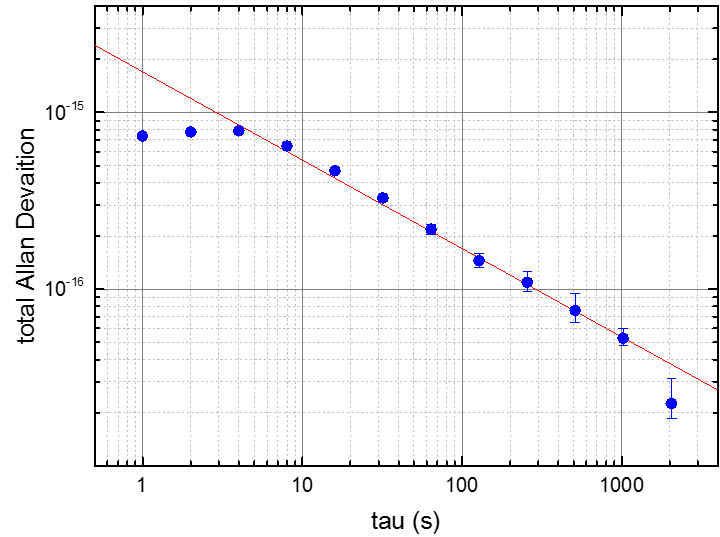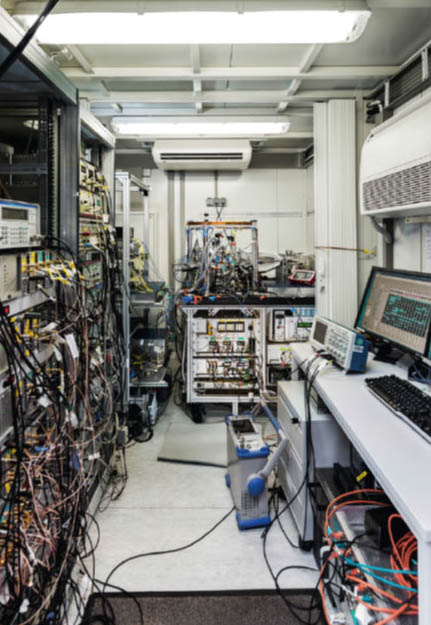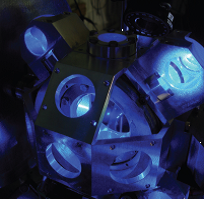WP2 Frequency comparisons using transportable optical clocks
Workpackage leader: Dr Christian Lisdat, PTB
Other participants: INRIM, VTT, NPL
The aim of this workpackage was to perform frequency comparisons using transportable optical clocks at a fractional accuracy level substantially better than that of caesium fountain primary frequency standards.
At PTB, a transportable 87Sr optical lattice clock was developed. In contrast to transportable optical clocks being developed in other projects such as the FP7 'Space Optical Clocks' project, where the background of space applications means that the mass, size and power consumption of the clocks is of prime importance, the goal of this work was to develop a clock with stability and uncertainty as close as possible to state-of-the-art laboratory optical clocks.
An initial evaluation of the transportable lattice clock was performed at PTB by comparison against a laboratory lattice clock. The 87Sr clock transition was resolved in the transportable apparatus with a linewidth of 6 Hz (full width at half maximum) and high contrast as shown below. These scans and the observed instability in the comparison against the laboratory lattice clock are well within the design expectations. In particular, the transportable clock laser comes close to reaching the performance of the most recent laboratory ones, with only a small trade-off in performance having to be accepted in order to meet the requirements of compactness and shock resistance. A fractional uncertainty below 10-16 was achieved for the transportable clock and confirmed by comparison with the laboratory clock.
 |

|
|
Strontium-87 clock transition at 429 THz |
Fractional frequency instability of the transportable |
Following its initial evaluation, the transportable 87Sr optical lattice clock was installed in a temperature controlled trailer and moved to the Laboratoire Souterrain de Modane (LSM) and INRIM for two separate measurement campaigns. In both locations the transportable lattice clock was successfully brought to operation, even in the very challenging environmental conditions at LSM where temperature fluctuations were much larger and background noise levels were much higher than in a metrology laboratory setting. At LSM the clock was used for a proof-of-principle experiment to show that optical clocks can be used to measure the gravity potential difference between two remote locations (see WP4). At INRIM a comparison with the local 171Yb optical lattice clock was performed, leading to a direct evaluation of the frequency ratio between the 171Yb and 87Sr optical clock transitions.
The PTB clock is the first functional transportable optical lattice clock worldwide and has achieved a performance better than that of any other mobile frequency standard, both in terms of instability and uncertainty.
 |

|
|
Physics package of the transportable strontium optical lattice clock |
|
At VTT, work focused on an alternative type of optical clock technology, with a transportable physics package being developed for a 88Sr+ trapped ion optical clock. In future this could be taken to NPL for a direct comparison with independently developed 88Sr+ optical clocks.

The research within this EURAMET joint research project receives funding from the European Community's Seventh Framework Programme, ERA-NET Plus, under Grant Agreement No. 217257.

